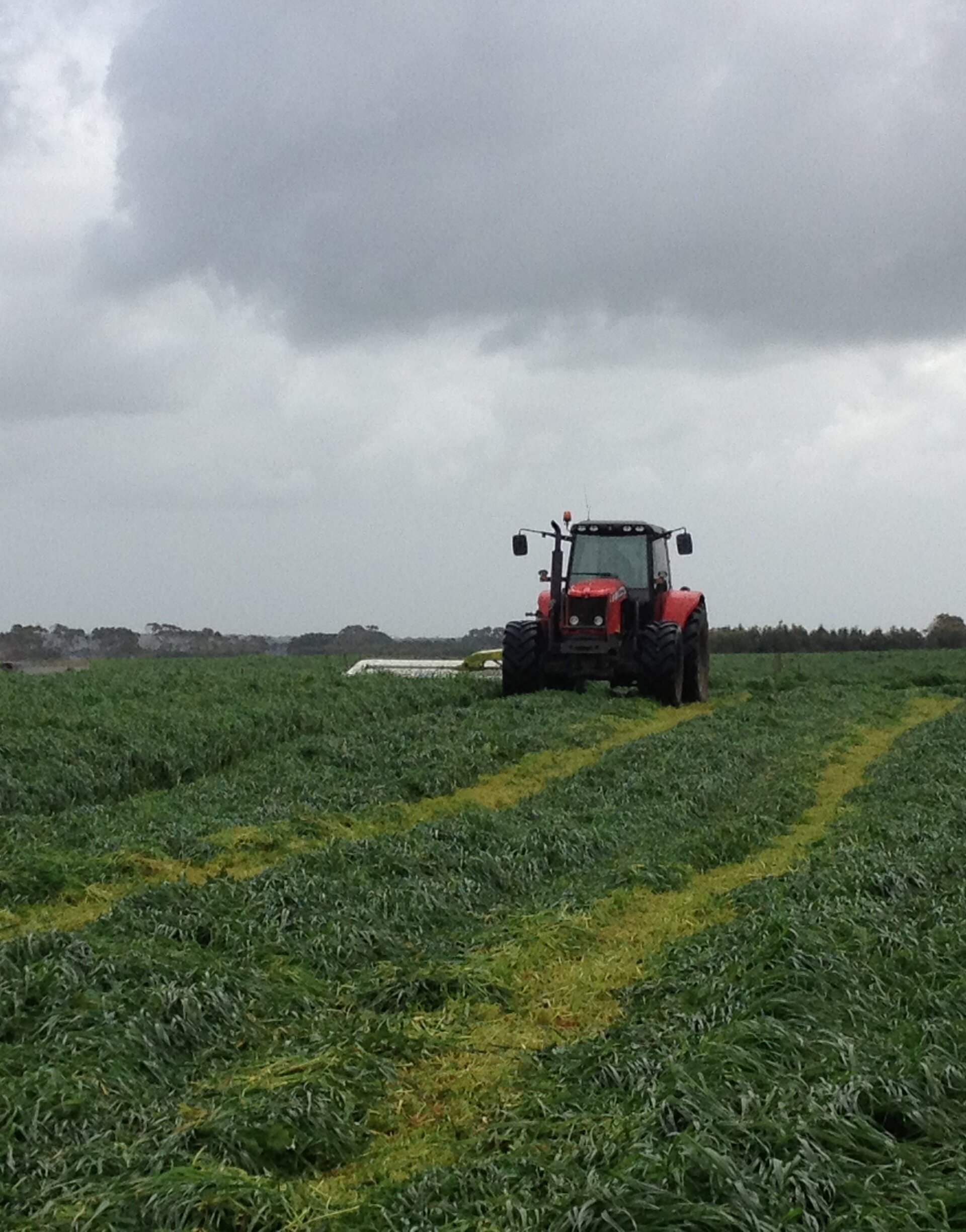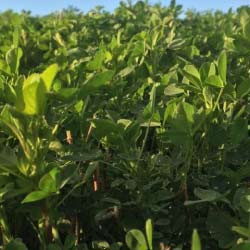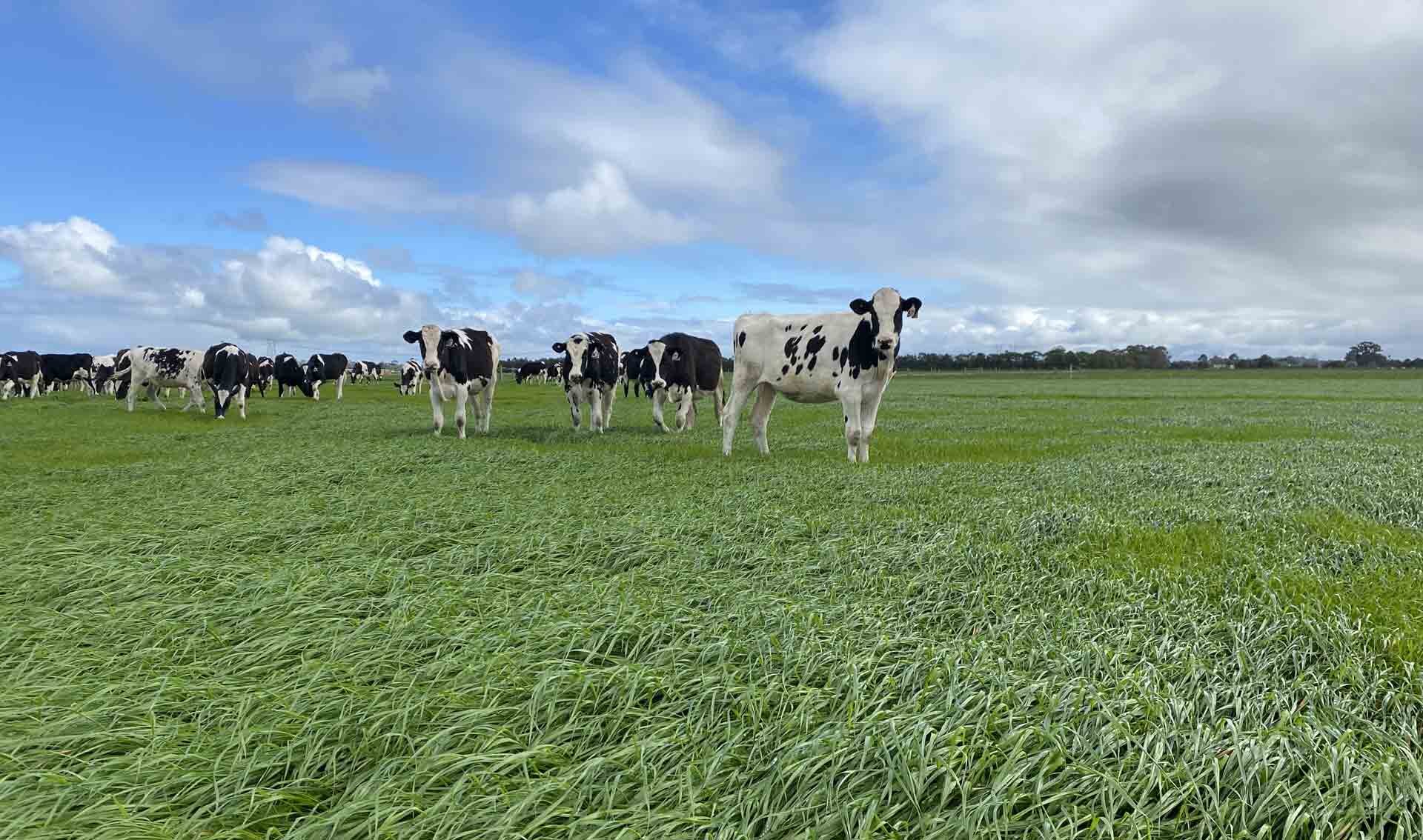Category: Pasture Advice

Wet silage, get it better
With wet weather conditions around delaying silage harvest Peter Notman discusses silage tips and why it is important now more than ever to use a 1174 (bale silage) or 11G22 (pit silage) inoculants. So now really is the time to focus on how to make the best possible silage from what is available in the paddocks. With on the most part wetter crops, they’ll need more lactic acid to bring down the pH to create stable, palatable silage. The risk of soil contamination is also higher in these conditions which further increases the risk of spoiled silage. THE SILAGE DILEMMA GET YOUR SILAGE BETTER – OUR TIPS AIM FOR A CLEAR CUT RAISE THE CUTTING HEIGHT FORECAST FOR RAIN? BALE […]

Stamina grazing tolerant lucerne varieties
In our experience in grazing Lucerne is generally grown on sites that will not support good stands of permanent pasture year round due to lack of summer moisture and or poor soil moisture holding profile. High yielding lucerne provides 3 to 4 and sometimes even 5 cuts per year and it will persist for at least 4 years and in some cases has been known to continue good high quality production for up-to 5 or 6 years. It is extremely robust with exceptional drought resistance due to its deep roots which often reach deep throughout the soil profile, which is ideal for farms that dry out significantly over summer. Why is drought tolerant? Lucerne relies on stored energy (carbohydrates) in its root […]

Renewing pugged pastures
After what most Gippsland farmers would consider a normal rain sodden winter, paddocks across the region have become saturated to a point that it has led to severe pasture damage, and recovery will depend on a number of factors when planning what strategies you may wish to take. Gippsland farmer and owner of Notman Pasture Seeds Peter Notman has provided some tips for repairing pugged pastures. Pugged pasture re-sowing options We have observed a large amount of successful spring grass sowing during our 30 years in the field when there is good planning, timing, seed soil contact and fertility. The spring pasture re-sowing window is short, so as soon as soils are dry enough to get machinery on the re-sowing […]

High risk redlegged earth mite season
Did you know a spring spray is very effective in controlling REDLEGGED EARTH MITES, to prevent damaging populations emerging next autumn? Key points: Spray in spring to control autumn outbreaks Remove females before summer egg laying October 16th ideal spray date for our southern Victorian customers Wet springs, like this season, ideal conditions for populations to flourish In spring RLEM lay diapause eggs which are extremely tough, surviving hot summers, and hatching when cooler, wet conditions arrive in Autumn – often causing significant damage to new pastures. With the help of the Timerite model, a AWI funded CSIRO program, farmers can predict the best date for spring spray, to control redlegged earth mites the following autumn. FOR EXAMPLEPOOWONG: 16th OctoberLatitude:38°20′Longitude:145°44′ […]

Better results from pasture renewal with a final check
Maximising autumn pasture renewal starts with optimising pasture establishment by checking for & eradicating competing weeds & grass – and this can make all the difference in success or sub-optimal establishment of new pasture. A final check of your paddocks before you spray them out this season is the first step towards establishing strong & persistent pasture. It’s an opportunity to find out what weeds are present, taking pictures if you’re unsure, and getting in touch with your local agronomy team to find out what you need to get rid of them. It often as simple as this final check. Peter Notman of Notman Pasture Seeds says even if you’re ticking all the other boxes with good variety selection, adequate soil fertility and start-up fertiliser, this final paddock check before sowing can establish the need to broaden […]
Pest protection for emerging seedlings – Insecticide Seed Treatment
Seed treatment is an effective way to protect emerging seedlings against pests, with options available for: Red-legged earth mite Blue oat mites African black beetles Aphids Cutworms Wireworms and Lucerne flea. Why use seed treatment? If you’ve encountered pasture loss in the past due to insect pressure, seed treatment is a worthy consideration. By protecting seedlings against key insects, seed treatment products help maximise plant establishment and early plant development when young seedlings are most vulnerable to pest pressure. Reducing the impact on the soil environment The active ingredient only covers the surface of each seed so that it is always located right where it is needed. The result is a reduction in the amount of chemical needed to protect […]

Pasture recovery from pugging damage
PETER NOTMAN | 2011 Despite the best efforts of many farmers, with the high rainfall in autumn, winter and early spring periods, soils have become saturated. This has led to severe pasture damage on a large number of farms in south-west Victoria and Gippsland. Recovery will depend on a number of factors, and when planning the recovery strategies best suited to your farm. KEY POINTS Prioritising your main targets early if possible. Don’t take on more than you can manage effectively. Roll as soon as soils begin to dry out – have the roller ready to go Control of weeds and pests essential both pre- and postgrazings of new re-sowings All re-sowing requires appropriate timing. All re-sowing requires good seed […]
Managing grass for lower sugar content
Fertiliser: It’s essential your paddock has enough nutrients to grow leafy and minimise the sugar concentration. Overgrazed poor pastures often have Native species: Native species are lower in sugar, however they don’t tolerate hard grazing very well. Hard grazing generally depletes the roots reserves. In an ideal world pastures are rotated to give the root reserves a rest. Graze earlier in the day: Generally lower sugar levels in the morning, or even in the shady areas of a morning. Sugars raise in the afternoon. Sunshine / Shade:
Why grow Multi Specie Pasture Blends?
Why grow Multi Specie Pasture Blends? Improve soil and root structure Improve pasture persistence Use water and nutrients more efficiently Interrupt pest and disease life cycles Prevent soil erosion. Improve moisture holding capacity Increase nitrogen with introduction of legume Prepare soil/paddock for following crop High quality forage for livestock Increase production, healthier stock, faster weight gains Managing Multi Specie Pasture Blends Start on small areas and work out which varieties prosper on your property. Observe the results and then make adjustments as necessary. It’s important that with multi specie blends that contain broadleaf species (such as chicory, plantain) that we do not apply any post emergent herbicides such as 2,4D Amine or MCPA. This will suppress or kill they species […]






